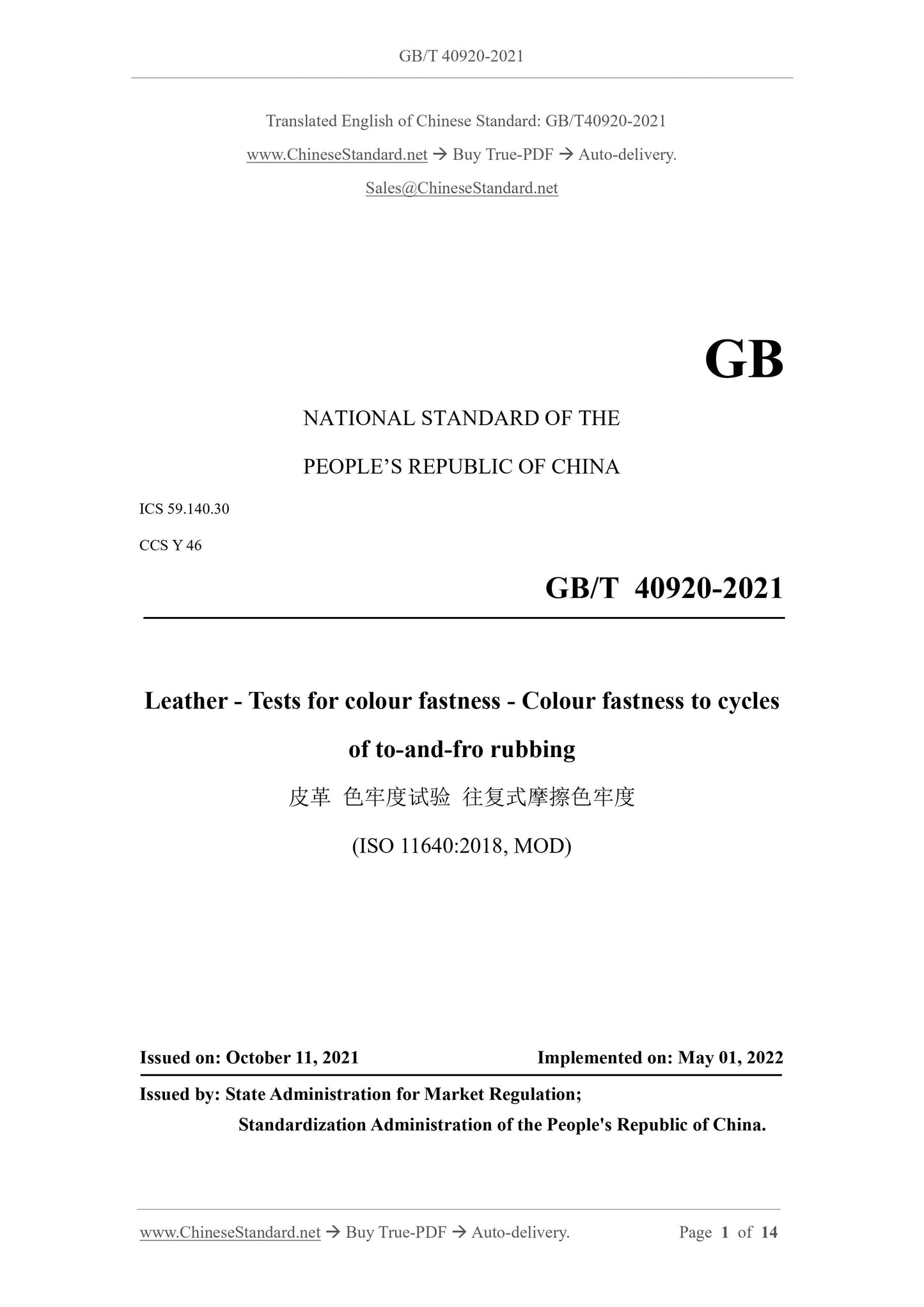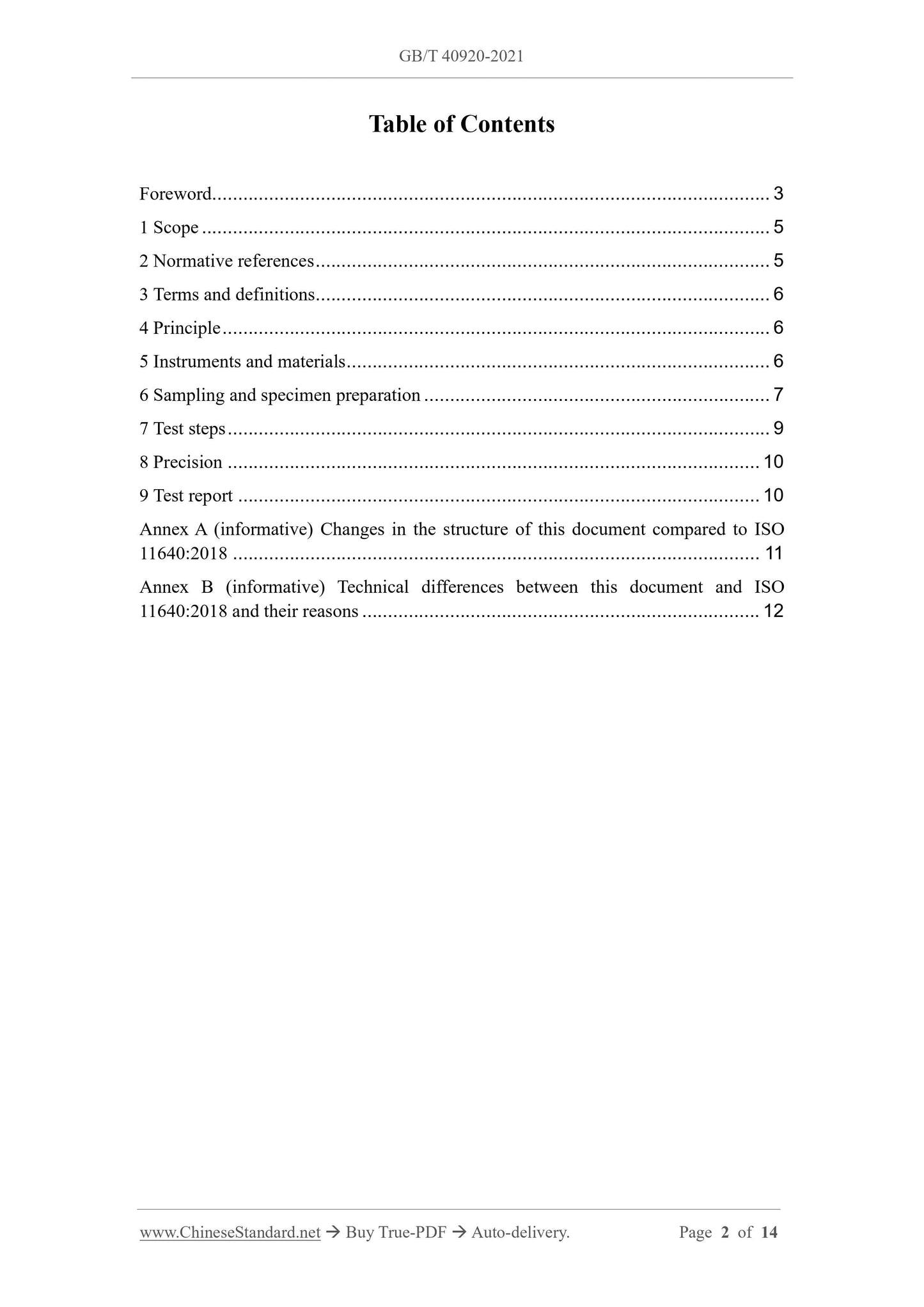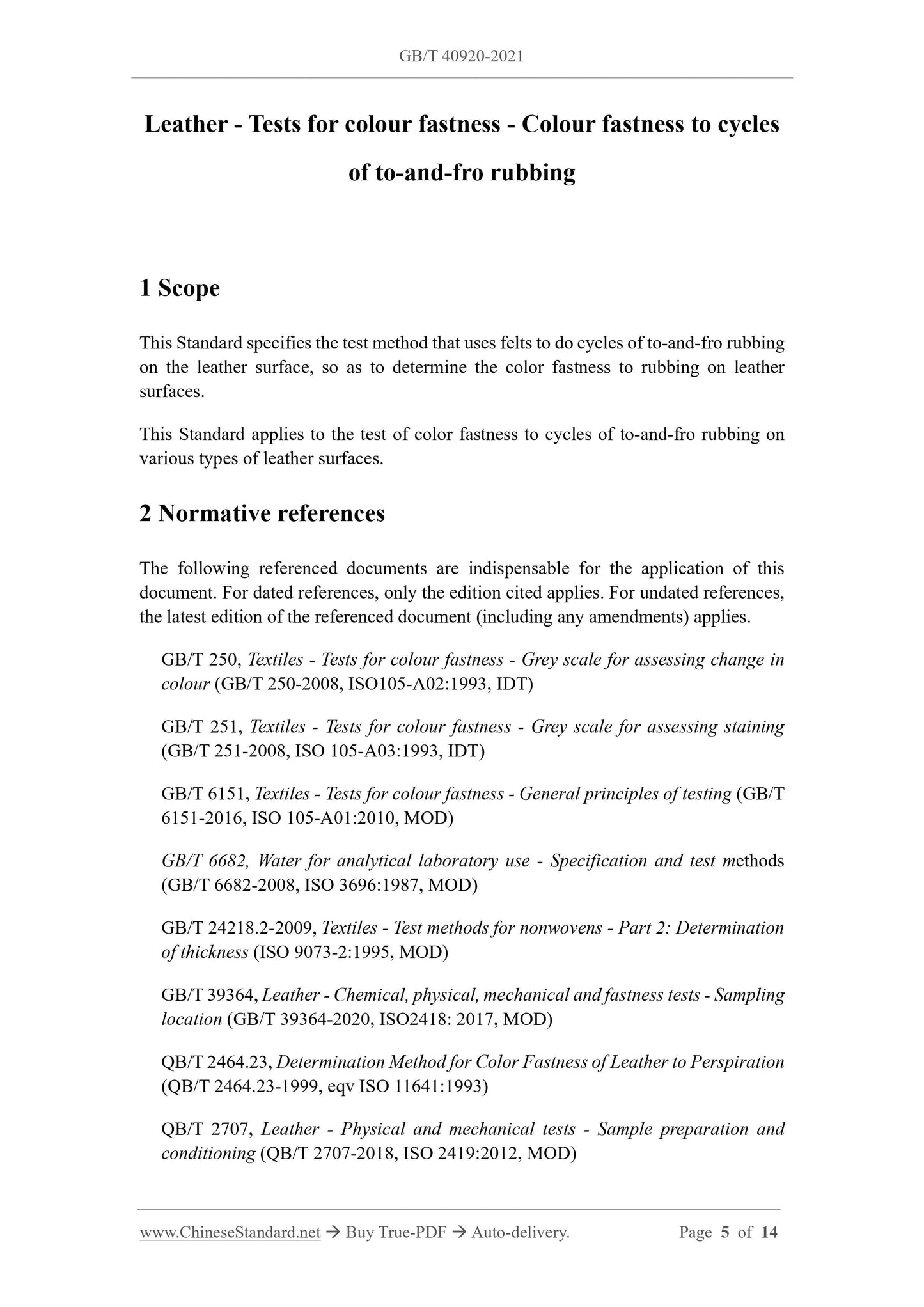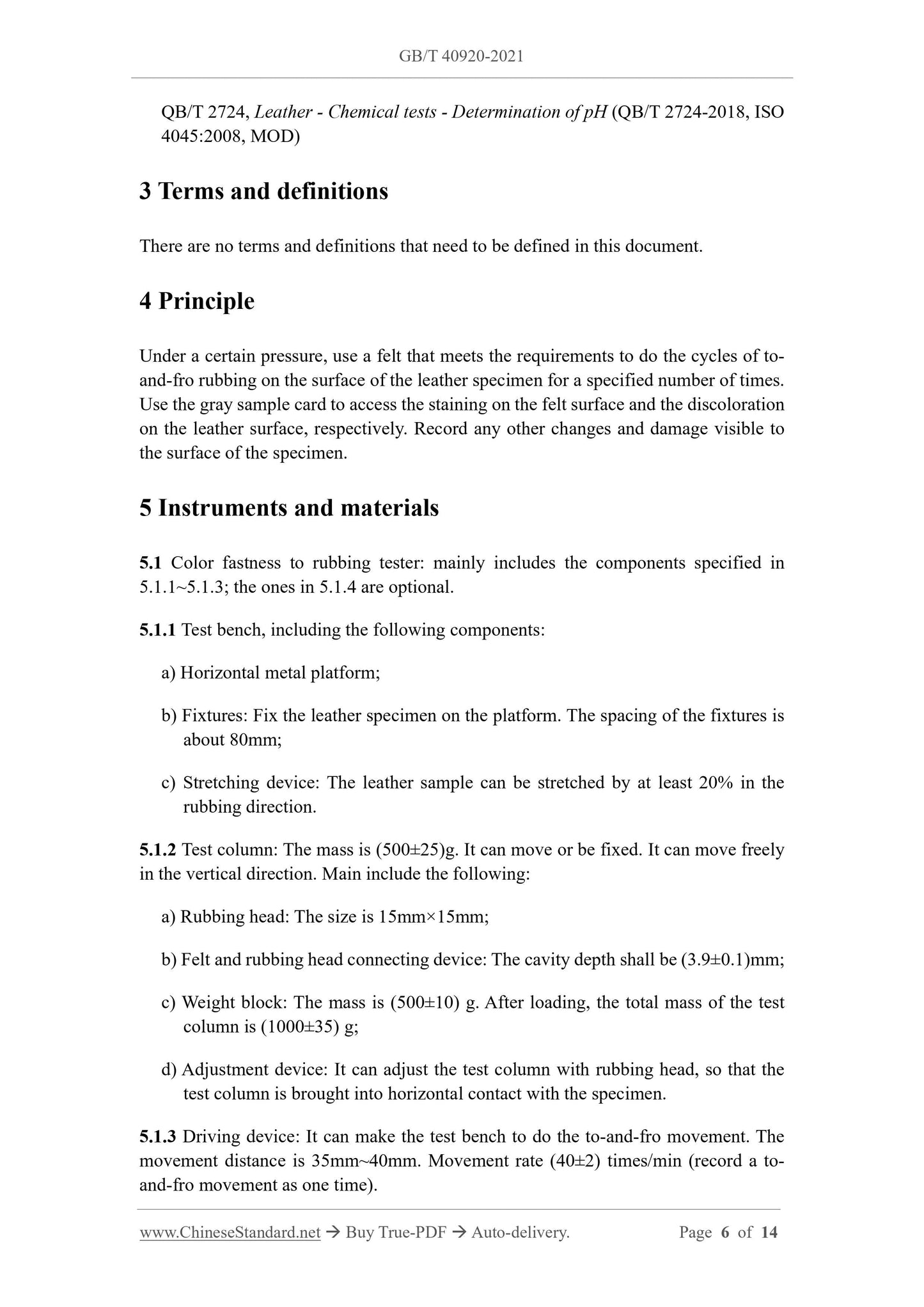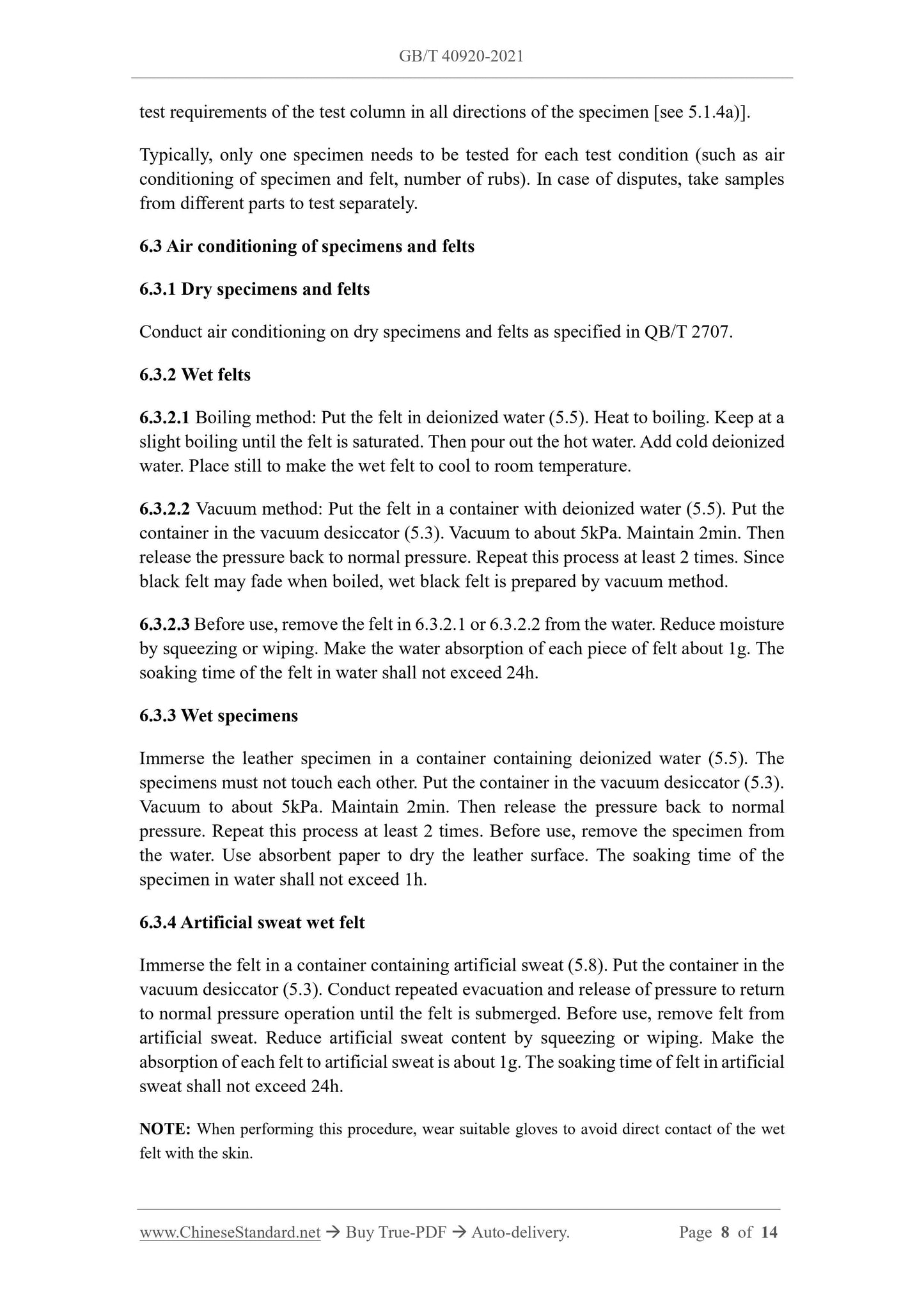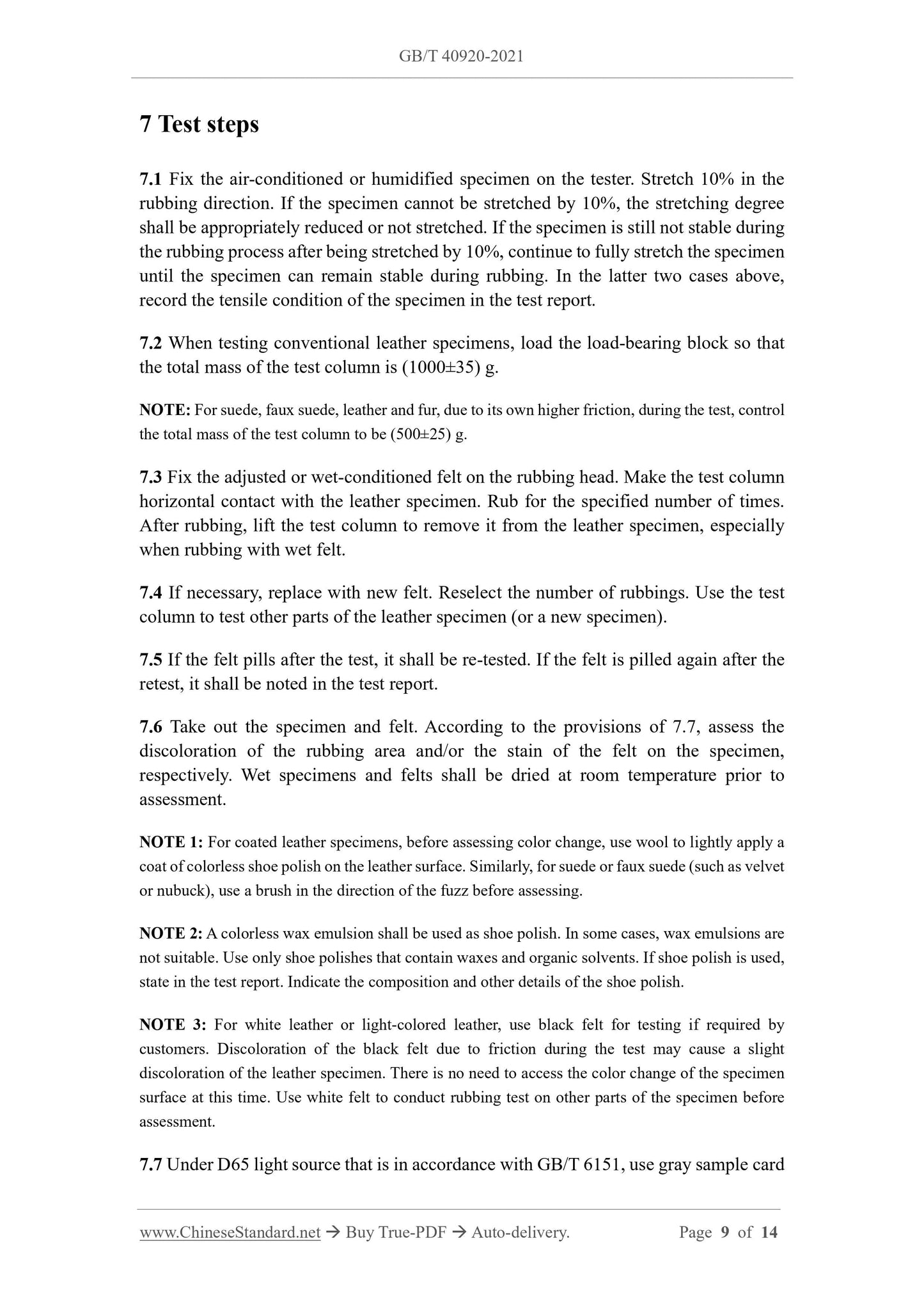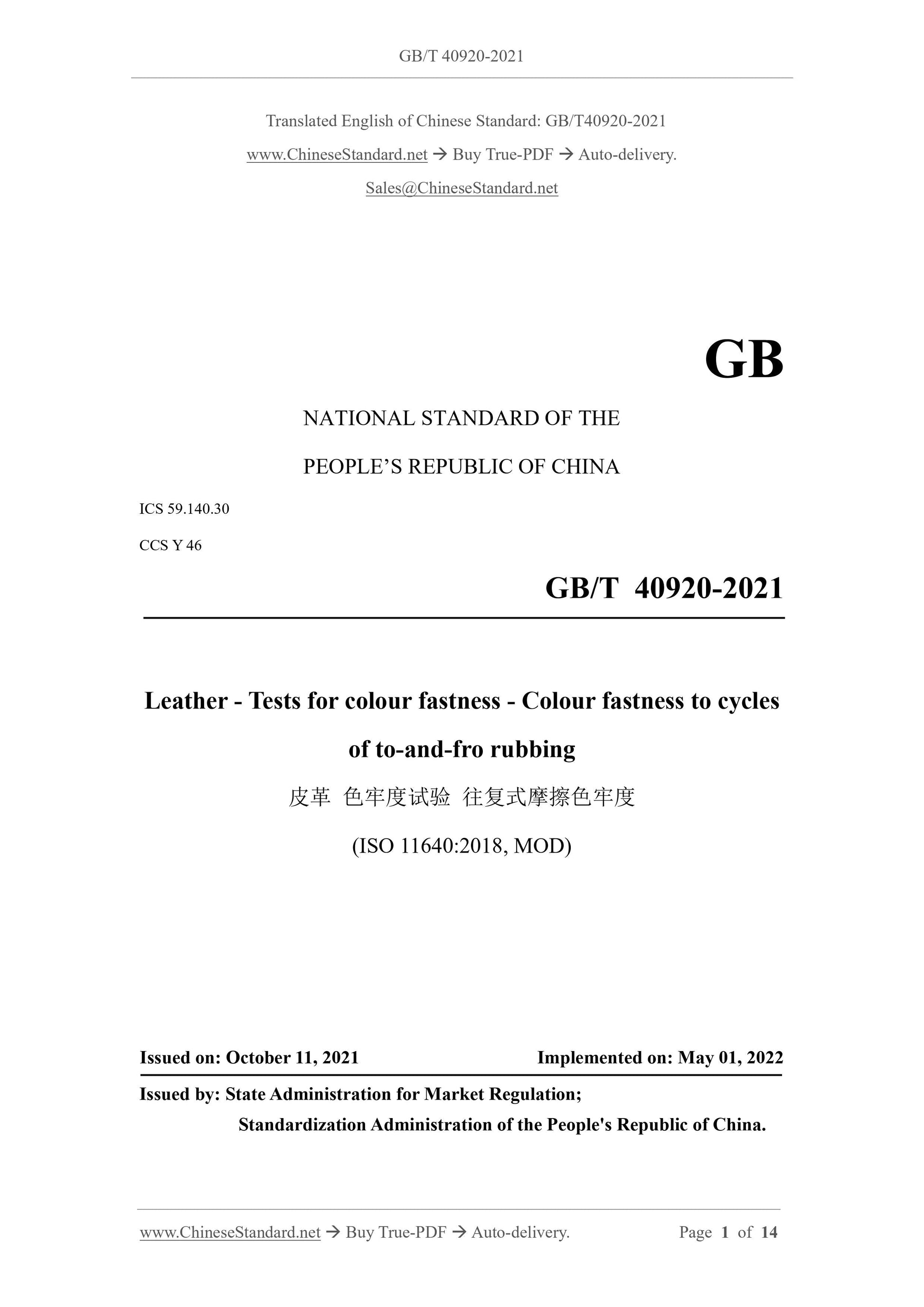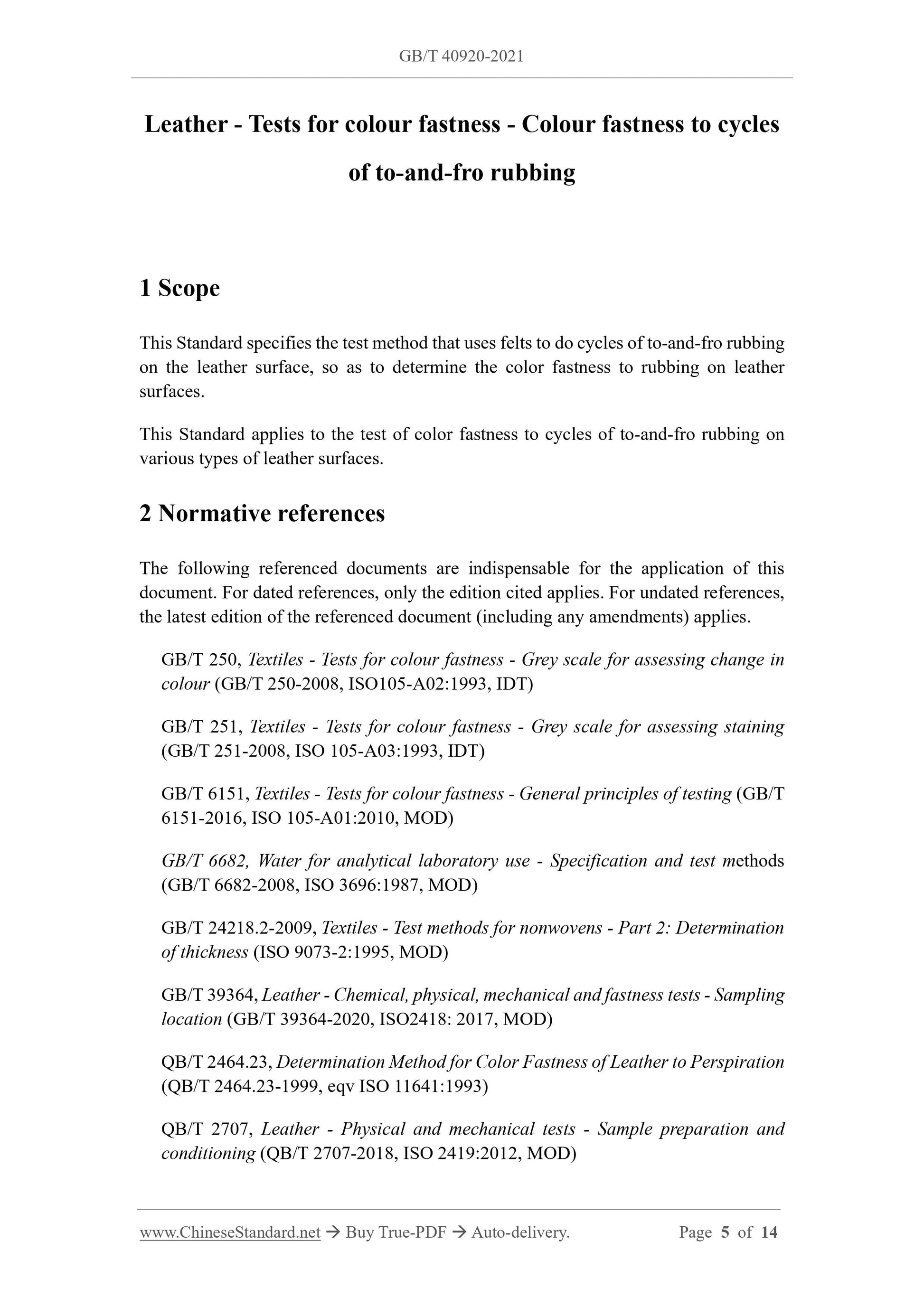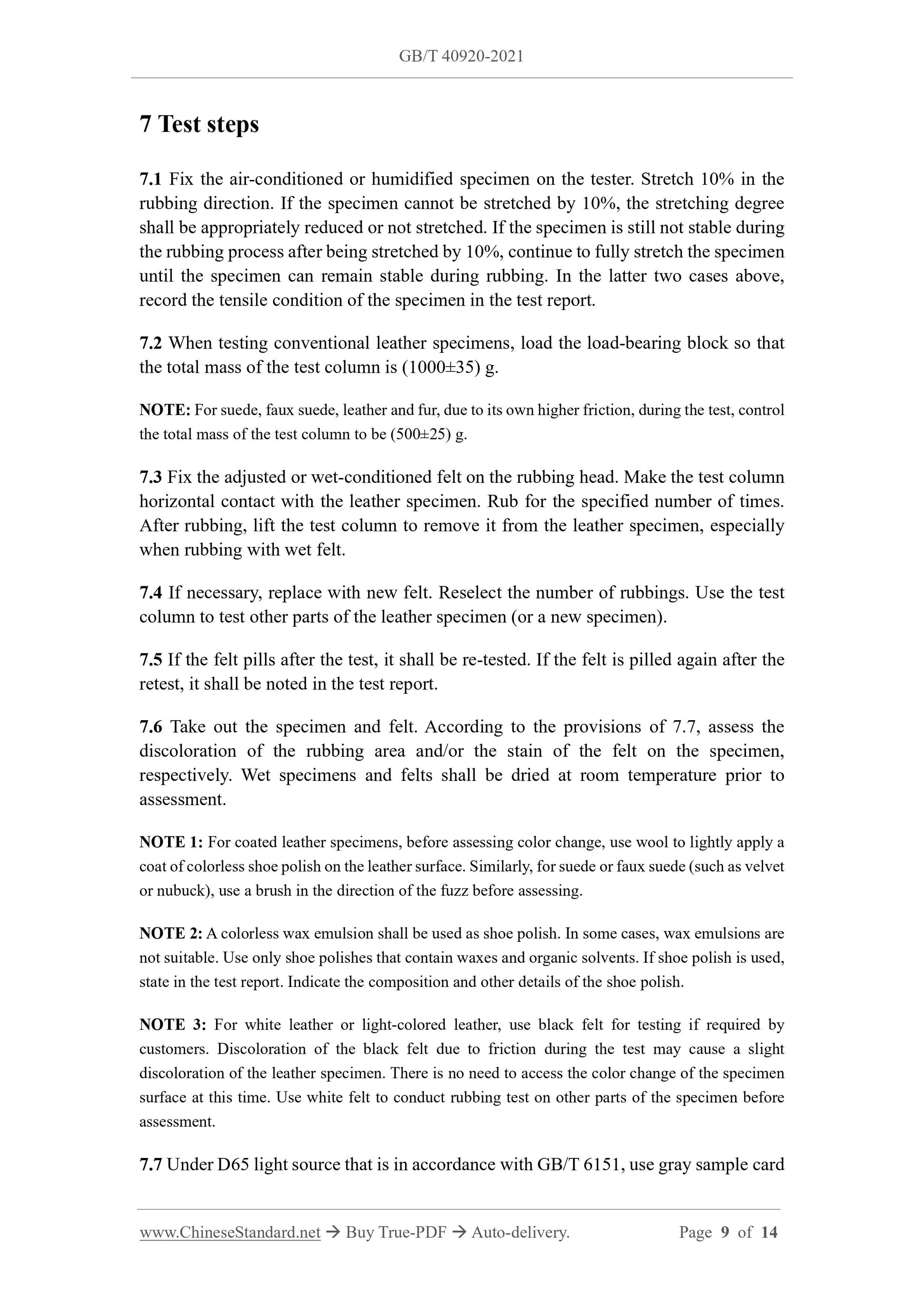1
/
of
6
www.ChineseStandard.us -- Field Test Asia Pte. Ltd.
GB/T 40920-2021 English PDF (GB/T40920-2021)
GB/T 40920-2021 English PDF (GB/T40920-2021)
Regular price
$185.00
Regular price
Sale price
$185.00
Unit price
/
per
Shipping calculated at checkout.
Couldn't load pickup availability
GB/T 40920-2021: Leather - Tests for colour fastness - Colour fastness to cycles of to-and-fro rubbing
Delivery: 9 seconds. Download (and Email) true-PDF + Invoice.Get Quotation: Click GB/T 40920-2021 (Self-service in 1-minute)
Newer / historical versions: GB/T 40920-2021
Preview True-PDF
Scope
This Standard specifies the test method that uses felts to do cycles of to-and-fro rubbingon the leather surface, so as to determine the color fastness to rubbing on leather
surfaces.
This Standard applies to the test of color fastness to cycles of to-and-fro rubbing on
various types of leather surfaces.
Basic Data
| Standard ID | GB/T 40920-2021 (GB/T40920-2021) |
| Description (Translated English) | Leather - Tests for colour fastness - Colour fastness to cycles of to-and-fro rubbing |
| Sector / Industry | National Standard (Recommended) |
| Classification of Chinese Standard | Y46 |
| Word Count Estimation | 9,969 |
| Issuing agency(ies) | State Administration for Market Regulation, China National Standardization Administration |
Share
